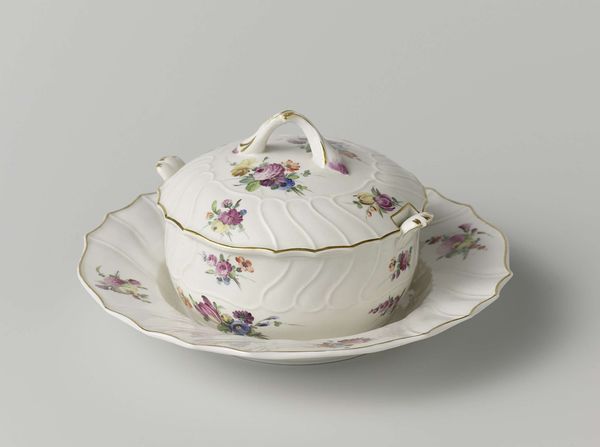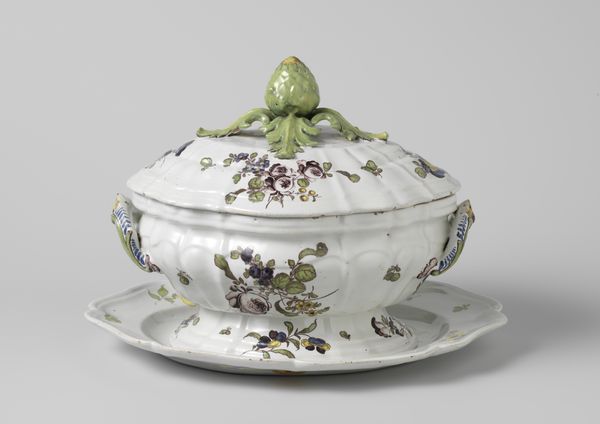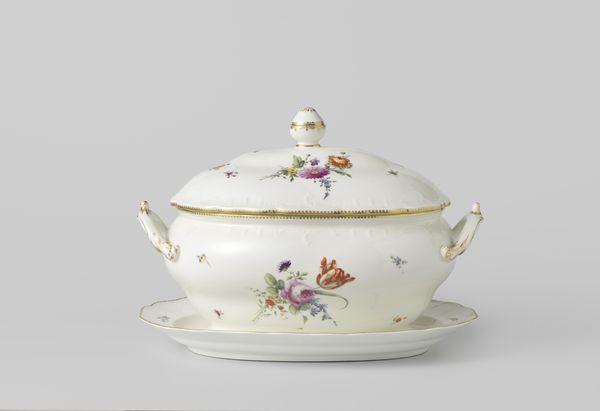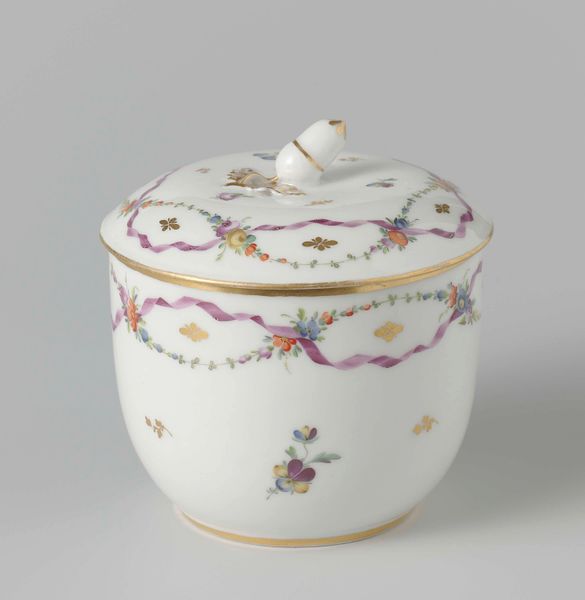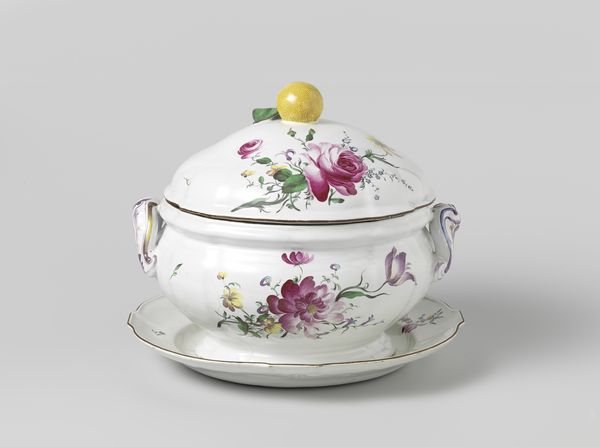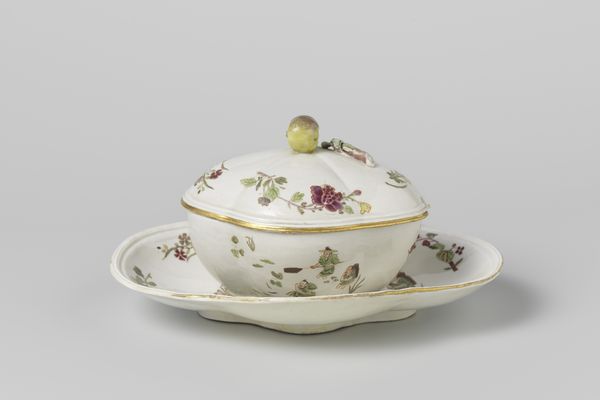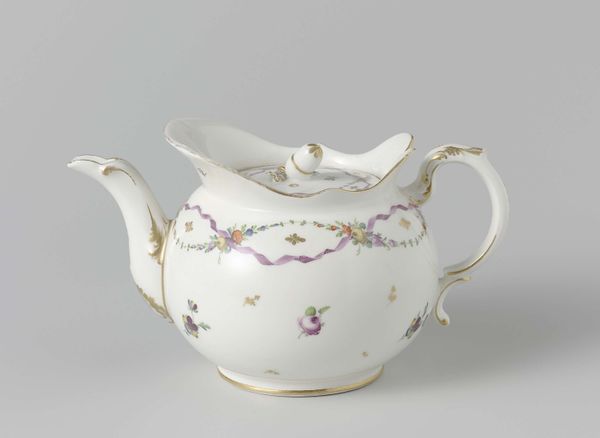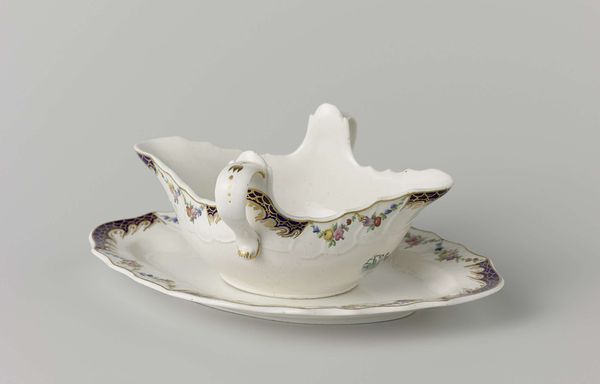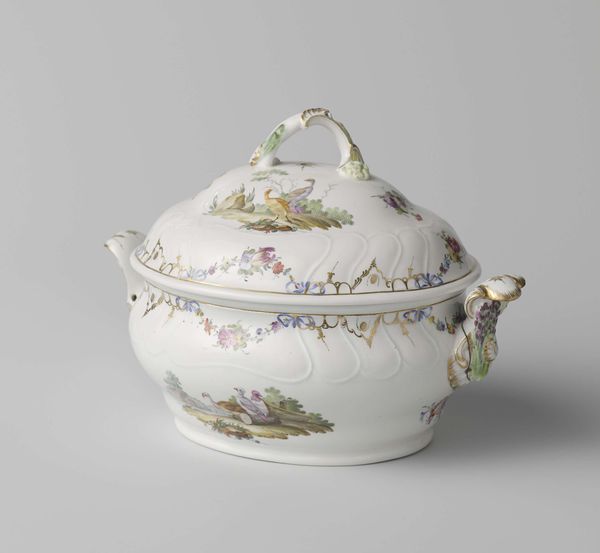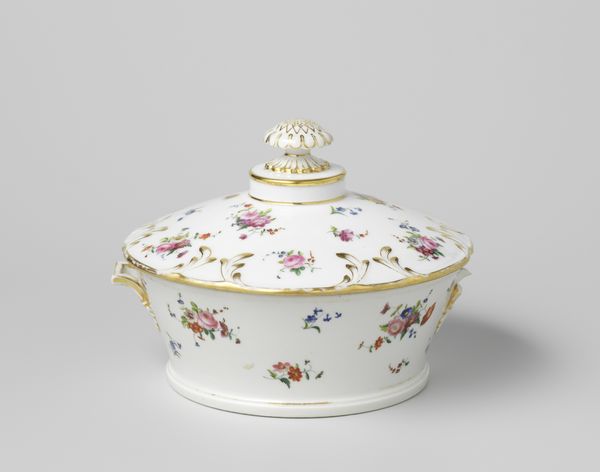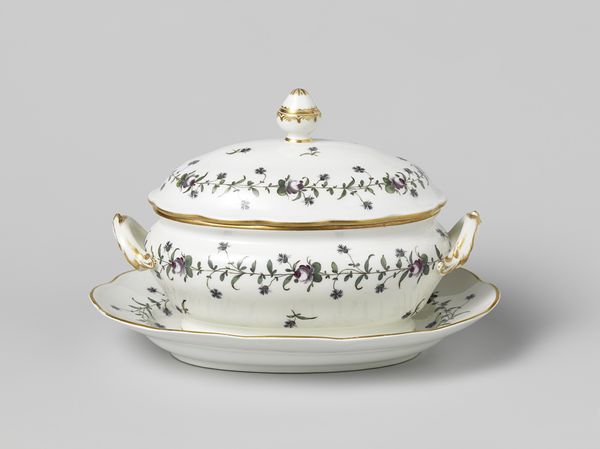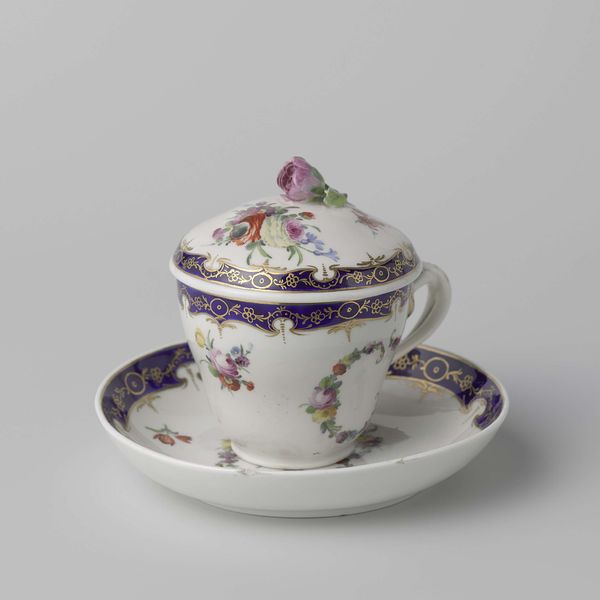
ceramic
#
ceramic
#
stoneware
#
ceramic
#
decorative-art
#
rococo
Dimensions: height 26.5 cm, height 25 cm, width 36 cm, depth 23 cm, width 49.3 cm, depth 33.3 cm
Copyright: Rijks Museum: Open Domain
Curator: I find this Rococo tureen and stand, crafted by Porzellanmanufaktur Frankenthal around 1759 to 1762, utterly charming. Its presence immediately lightens the mood of the gallery space. Editor: Charming, certainly, but to me it reads more as an elaborate power statement. Think of the social context: Porcelain like this signaled immense wealth and status. It speaks volumes about class distinctions and consumption in 18th-century Europe. Curator: I see your point. While the delicate floral motifs and swirling gold accents are beautiful in their own right, it’s essential to consider that these decorative objects served as props within a carefully constructed social hierarchy. These Rococo flourishes naturalize inequity and opulence. Editor: Exactly. Looking at the form itself—the curving lines, the asymmetrical design, the interplay of void and solid—one can see a desire to impress. These weren't meant to be utilitarian objects; they were designed to visually communicate status and refinement. What's intriguing is the detail--even the most subtle nuances are working overtime to denote hierarchy. Curator: Yet, isn’t there also something performative about this display? This elaborate set hints at a ritual of dining, but what are its values? Luxury as theatre, a constructed performance meant to display a narrative of refinement and taste. Editor: Precisely! The function almost disappears beneath layers of symbolism. What do you notice when you consider the craftsmanship of the floral embellishments and how the gold trimming creates movement? It's all a carefully curated spectacle designed to overwhelm. Curator: I think about who was excluded, who produced these. This delicate exterior masks realities of exploitation and power structures rooted in colonialism. Porcelain relies on particular natural resources as well as the hands and labor that shaped these materials. It makes me think of questions surrounding ethics in consumption. Editor: Yes, seeing how an object like this embodies an era's aesthetic values helps us interpret our present-day world. The design features continue to permeate current trends. Curator: Understanding how such objects embody and perpetuate social and historical inequalities invites introspection about values of access and ownership today. Editor: Absolutely. Examining its materiality shows the intention of artists and commissioners to convey wealth, which reveals societal ambitions that mirror ours today.

